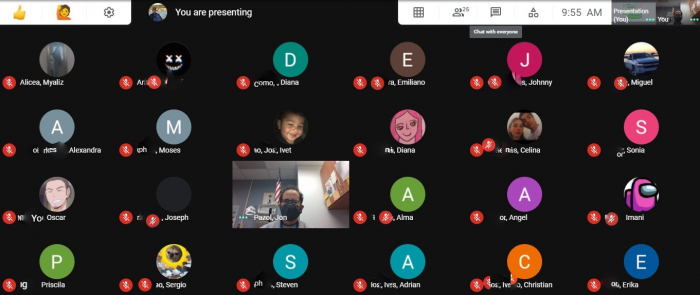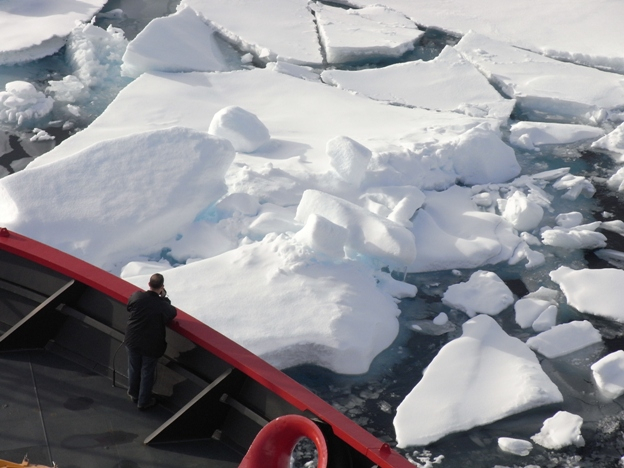One of the most impactful sensations from a visit to the arctic in 2009 was feeling remote. Exploring the streets of Utqiagvik (Barrow at the time) and realizing that the only way in or out of the area was by boat or plane was remote. Not having access to a cell phone because the satellites that picked up the signals did not cover that far north was remote. Climbing aboard an icebreaker and leaving the site of land for six weeks was remote. Even living with 150 members of the Coast Guard and science teams aboard a 420 foot ship seemed remote because we could go days without seeing some people.
Even the science was remote. Our work involved using remote sensing technology to map the ocean floor. Discovering a new 1100 meter tall seamount that was 2.5 times further below the ocean’s surface and 700 miles from land was remote. Analyzing sound data recorded under the ice over the course of a year was remote. Using satellites to map ice cover and compare it with on-board observations was also at a distance. Darkness was remote, as the sun just barely set below the horizon only to appear almost immediately. Despite the real physical sense of remoteness, the experience was exhilarating. It represented a way to explore and gain perspective. I celebrated the remoteness of the Arctic ocean and vast expanses of ice. I enjoyed the solitude. I felt remote, but not lonely.

Our PolarTREC orientation was remote, so we did not get to engage in the “off-hours bonding” that makes professional development so rewarding. I have connected with my colleagues, but there is little regularity in keeping up with them other than a few collaborations on combating scientific misinformation strategies, following Facebook posts, or reading sporadic journal entries. When the CODA (Coastal Ocean Dynamics in the Arctic) expedition actually took place, I was able to feel more connected, even though I was following it remotely.
Jim Thomson of the University of Washington and 3 other researchers spent 47 days away from home in order to collect their final year of data. The original team was reduced from 26, and the new team had to quarantine for 14 days before boarding the R/V Sikuliaq. The dates changed multiple times, and the new itinerary included 9 days of transit before the first of the seafloor moorings could be recovered. The CODA team recovered about half of the moorings. Some of them were brought up using an acoustic release process (sending remote signals to the moorings to release buoys which allowed them to surface), while others required diving in the cold arctic waters to recover. The researchers were able to download data, so their efforts were not lost, and they have since returned to begin the process of analysis and drawing conclusions. While my own participation in this expedition was remote, I look forward to following up with their results.
Reconnecting with the CODA project and with PolarTREC has shown me that despite the challenges of our current situation, the science continues, and we are not as isolated as we might seem.



Comments